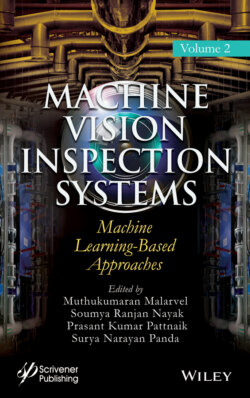Читать книгу Machine Vision Inspection Systems, Machine Learning-Based Approaches - Группа авторов - Страница 14
1.2 Related Works
ОглавлениеDifferent works have introduced by several researchers and scientists for the processing of virus as well as other images for wide variety of applications in the real world scenario [1–34, 35–55]. Some of the works are described as follows. Singh et al. [2] focus on the review of several ML as well as image processing techniques for the detection and classification of paddy leaf diseases. Al-Kasassbeh et al. [5] focus on the feature selection mechanism by the help of ML-based approach for the classification of malware. Yang et al. [6] focus on a sequence embedding-based ML mechanism for the prediction of human-virus protein–protein interactions. Dey et al. [7] focus on ML-based techniques for sequence based prediction of viral host interactions between human proteins and SARS-CoV-2. Karanja et al. [9] focus on ML-based techniques as well as image texture features for the analysis of internet of things malware. Muda et al. [14] focus on the k-means clustering as well as NB classification mechanism for intrusion detection. Trishan et al. [17] focus on ML-based classification such as NB, k-nearest and random forest to detect Hepatitis A, B, C and E viruses. Kaur [19] focuses on the ML-based approaches such as kNN and NB for the detection of fraud associated with credit card. Goyal [20] focuses on a NB model that is based on enhanced kNN classification mechanism for the prediction of breast cancer. Wahid et al. [22] focus on the performance analysis of several ML-based techniques for the classification of microscopic bacteria images. Ito et al. [27] focus on convolutional NN mechanism for the detection of virus particle in transmission electron microscopy (TEM) images. Devan et al. [28] focus on transfer learning mechanism to detect herpesvirus capsids by considering several TEM images.
